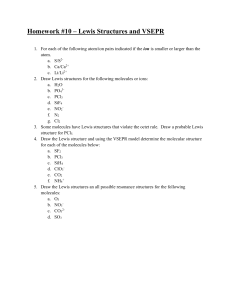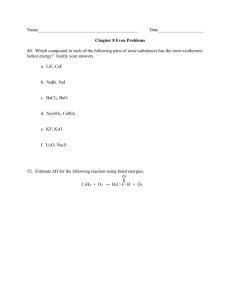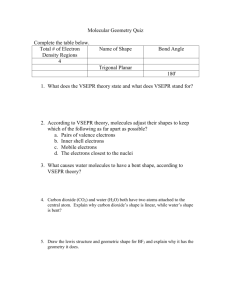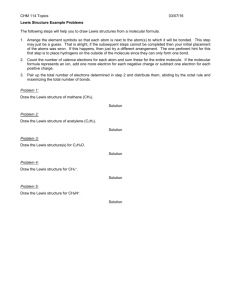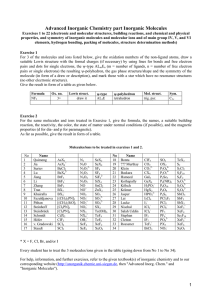Lewis Structures & VSEPR Practice: Chemistry Exercises
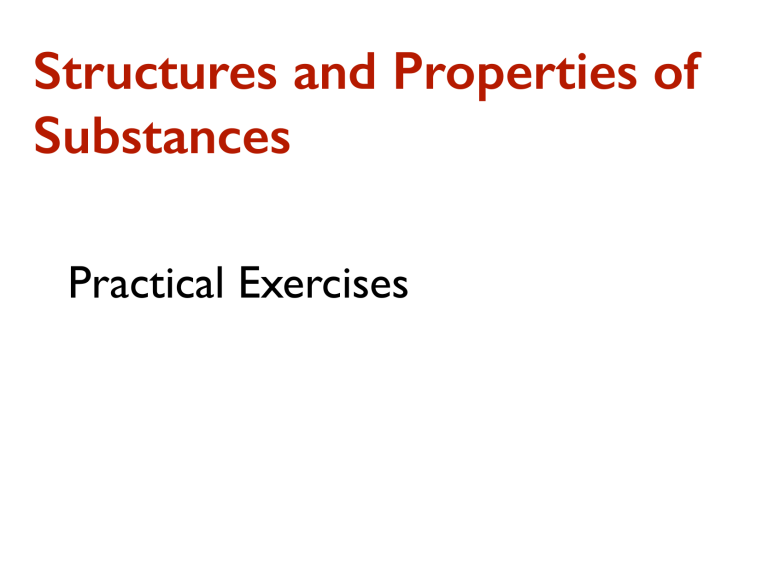
Structures and Properties of
Substances
Practical Exercises
Lewis structures
• Draw Lewis structures for each of the following molecules.
(a) NH
3
(c) CF
4
(e) BrO − (g) H
2
O
2
(b) CH
4
(d) AsH
3
(f) H
2
S (h) ClNO
• Draw Lewis structures for each of the following ions. (Note: Consider resonance structures.)
(a) CO
32
− (b) NO + (c) ClO
3
− (d) SO
32
−
• Dichlorofluoroethane, CH
3
CFCl
2
, has been proposed as a replacement for chlorofluorocarbons
(CFCs). The presence of hydrogen in CH
3
CFCl
2
markedly reduces the ozone-depleting ability of the compound. Draw a Lewis structure for this molecule.
• Draw Lewis structures for the following molecules. (Note: Neither of these molecules has a single central atom.)
(a) N
2
H
4
(b) N
2
F
2
• Although Group 18 (VIIIA) elements are inactive, chemists are able to synthesize compounds of several noble gases, including Xe. Draw a Lewis structure for the XeO
4
molecule. Indicate if coordinate covalent bonding is likely a part of the bonding in this molecule.
VSEPR
•
Draw Lewis structures for the following molecules and ions, and use VSEPR theory to predict the molecular shape. Indicate the examples in which the central atom has an expanded octet.
(a) XeI
2
(b) PF
6
− (c) AsF
3
(d) AlF
4
−
•
Draw Lewis structures for the following molecules and ions, and use VSEPR theory to predict the molecular shape. Indicate the examples in which the central atom has an expanded octet.
(a) XeI2 (b) PF6 − (c) AsF3 (d) AlF4 −
